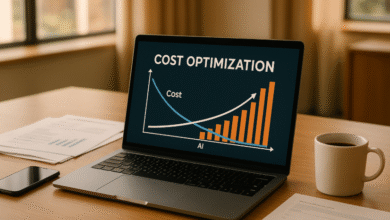Field Service Mobile Applications Transforming On-Site Efficiency

Field service mobile applications have become essential tools for modern businesses managing on-the-ground operations. They enable technicians to handle scheduling, dispatching, and communication directly from their mobile devices, improving efficiency and reducing errors. These apps allow field teams to work offline, update job statuses in real-time, and access critical information quickly, streamlining daily tasks.
With features like GPS navigation, real-time updates, and customizable workflows, field service apps help businesses adapt to changing conditions and meet customer expectations promptly. The mobile-first design ensures technicians stay productive even without consistent internet access, making these tools reliable in various environments.
The impact of field service mobile applications extends beyond convenience; they transform how companies track operations, communicate internally, and deliver service, leading to measurable improvements in productivity and customer satisfaction.
Core Features of Field Service Mobile Applications
Field service mobile applications focus on efficient handling of work orders, dynamic scheduling, and accurate location tracking. These features improve communication, reduce delays, and provide real-time insights to field teams and managers.
Work Order Management
Work order management allows technicians to receive detailed job information directly on their devices. This includes job descriptions, customer details, required materials, and safety notes. The app enables users to update work status instantly, such as marking tasks “in progress,” “completed,” or “on hold.”
Many apps also support photo attachments and digital signatures for proof of service. This reduces paperwork and streamlines administrative tasks. Prioritizing work orders based on urgency or service level agreements ensures critical jobs are handled promptly.
Real-Time Scheduling and Dispatch
Real-time scheduling optimizes technician assignments by balancing workload and geographic considerations. Dispatchers can update schedules instantly to reflect cancellations, emergencies, or delays. Notifications alert technicians to new or changed tasks without manual communication.
This feature helps avoid double bookings or missed appointments. It also enables rescheduling based on technician skill sets, availability, and parts needed for the job. As a result, field teams operate more efficiently, and customers receive timely service.
GPS and Location Tracking
GPS and location tracking provide visibility into technician locations throughout the workday. Supervisors can monitor travel routes and estimated arrival times. This data helps manage response times and optimize routing to reduce fuel costs and delays.
Some apps use geofencing to log arrivals and departures automatically. Location tracking also improves safety by enabling rapid support if technicians encounter emergencies. For customers, real-time technician tracking increases transparency and satisfaction.
Benefits and Best Practices for Implementation
Field service mobile applications improve operational efficiency by providing real-time data and seamless communication between field technicians and office staff. They help reduce errors, speed up task completion, and increase transparency throughout service workflows.
Boosting Technician Productivity
Mobile apps give technicians instant access to work orders, schedules, and customer information. They eliminate the need for paper documentation, enabling quicker job start times and fewer administrative distractions.
With features like location tracking and offline capability, technicians can optimize routes and continue work even without continuous internet access. This reduces downtime and travel costs.
Proper training and hands-on experience during rollout ensure technicians use all app features effectively. Providing ongoing support helps address challenges and maintains high productivity levels.
Enhancing Customer Experience
Mobile apps enable real-time updates on job status and arrival times, keeping customers informed and reducing uncertainty. Accurate data entry minimizes errors, leading to faster issue resolution.
Technicians can collect electronic signatures, photos, and notes on site, which improves transparency and accountability. This visible proof of service enhances customer trust.
Prompt and clear communication facilitated by apps allows businesses to respond quickly to customer needs and schedule changes, ultimately increasing satisfaction and retention.
Read also: Smart Homes for Sale With Latest Tech Features
Integrating With Back-Office Systems
Successful implementation requires seamless integration with existing systems like CRM, ERP, and inventory management. This connection synchronizes information across departments and prevents data silos.
Automation of inventory levels and billing through integration reduces manual tasks and errors. It ensures accurate parts tracking and timely invoicing.
Planning integration before deployment and involving IT teams early reduces technical issues. Establishing workflows that leverage shared data maximizes operational efficiency and reporting accuracy.




